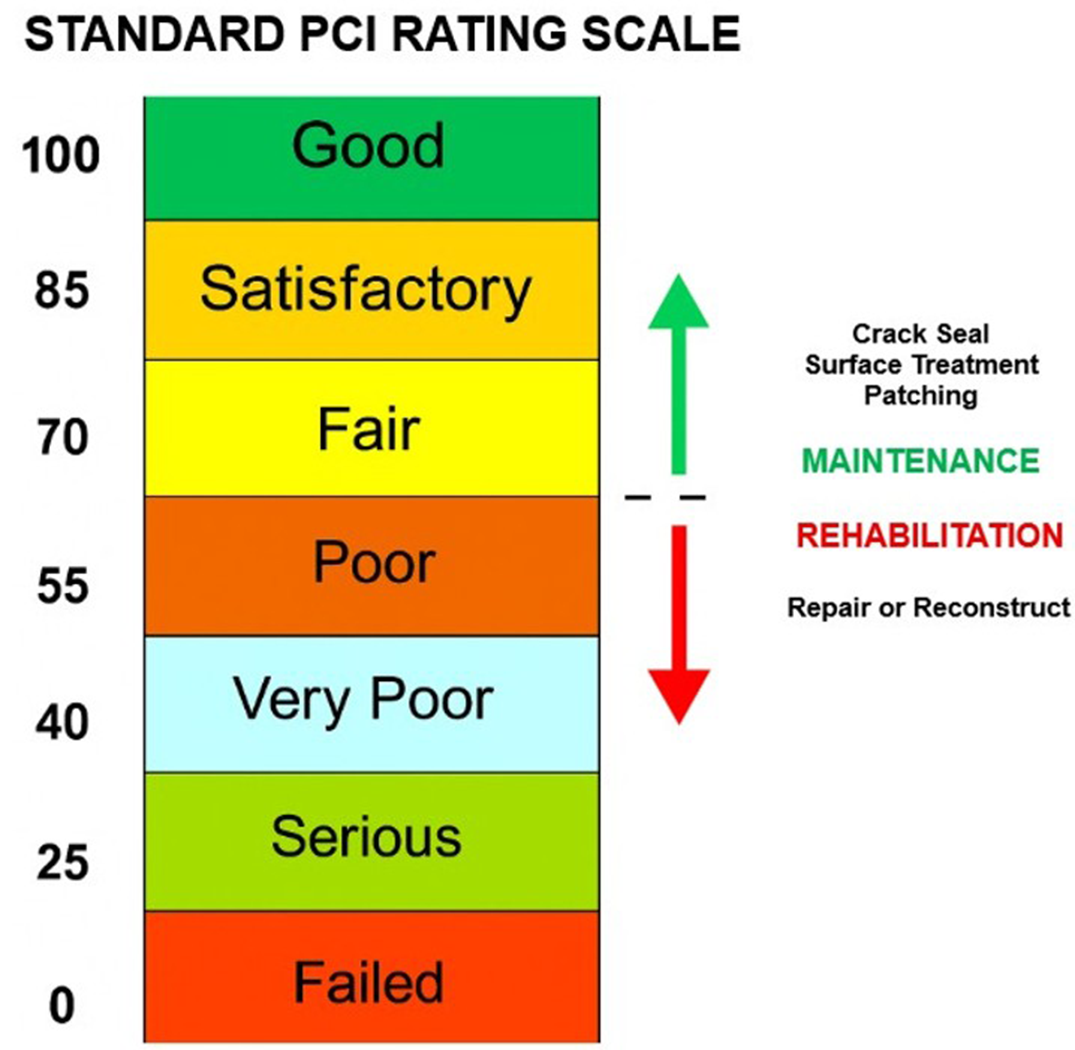Paving the way to cost savings

Pavement management standards provide a data-backed foundation for developing maintenance plans.
Image from Getty Images
More property, more pavement to maintain. Pavement is one of the largest infrastructure assets of any health system. Its proper management improves customer experience, reduces potential liability and can extend the useful life of the asset.
This not only can save the health system millions of dollars over time that can be invested elsewhere, but it also sends a powerful message to the patient that the health care system cares about their experience with and their impression of the facility. Well-maintained pavement says, “We invest in you before you even step into our buildings.”
Two things stand out in a recent CBRE report on health care real estate:
- Decentralization of health care services continues. Consumer preference for more convenient locations increasingly acts as a driver for medical outpatient buildings (MOBs).
- While MOBs mostly develop away from health system campuses, new builds “… adjacent to or directly on hospital grounds are 150% larger as physicians prefer to remain near hospitals.”
Whether a health system has one building or 50, in one city or many, the challenge of effectively managing thousands or millions of square feet of pavement can be met with the systematic application of the right technology and discipline.
The doorway to pavement management
The pavement condition index (PCI) is a numerical scoring methodology that rates pavement surface conditions, which can be leading indicators of future pavement failures. Developed by the U.S. Army Corps of Engineers, it was later standardized by the ASTM International. Programmatic evaluation of pavements using this index is the foundation of successful pavement management.
Regular pavement inspections — using simple technology to collect the data and machine learning to analyze the data — determine the type, amount and severity of pavement distress present and rates it on a scale of 0 to 100 based on the ASTM standard.
This approach delivers quantifiable data to understand pavement conditions. This equips decision-makers with consistent, unbiased information to calculate the type of maintenance needed and when and what to budget for it based on degradation forecast scores.
Many organizations use rating systems like pavement surface evaluation and rating, developed by the University of Wisconsin–Madison and certified through the Michigan Department of Transportation. While practical for properties to get a baseline feel of pavement conditions, the results are not particularly helpful in estimating maintenance requirements and costs.
This and other windshield (i.e., done from your car) assessments or those conducted manually where the practitioner is walking with a measuring wheel, pen and paper have several disadvantages compared to more scientific disciplines like the PCI scoring method. In a man versus artificial intelligence (AI) contest, man loses in coverage — often covering less ground than what is collected through technology — as well as in quality of data collected, if the data is collected at all.
It is not uncommon that an organization’s facilities management department is so thoroughly occupied with duties inside the facilities that they cannot get to the pavement assessment or there is so much variation in scoring among personnel carrying out the assessment that the data that they do manage to gather has little value.
This can be costly. For some organizations that believe time and money can be saved by carrying out pavement assessments on their own, the result is often inaction and delay. Instead, pavement distress that could have been proactively addressed is left to degrade over time, leaving the facilities manager at the mercy of more costly repairs from a contractor’s reactive recommendation on how to fix a high-severity repair.
AI wins in the quality of its data analysis and information on which pavement engineers base their recommendations. It is a machine-learning model trained on hundreds of sites, teaching the model the various types of pavement distress. Pavement engineers “teach” the AI what each type of distress is and review AI’s analysis of the distress as part of a robust quality assessment and control protocol.
Getting started with data gathering
There are steps organizations can work through to determine if it makes sense to include pavement management as a potential cost-saving measure. Many, however, are driven by one of two thought processes: They want to be more cost-effective in managing this asset but don’t know how to go about it, or they want to better achieve environmental impact goals by more thoughtfully maintaining the asset.
The good news is that the implementation of a pavement management program can do both. It will improve cost efficiency and produce less waste, as proper maintenance of pavement reduces the need to remove and replace it.
A good place to start is a risk/benefit analysis based on the volume of the organization’s pavement asset, the age of each property’s pavement, maintenance budget history and what the financial and other risks may be without better planned and budgeted maintenance.
When the decision is to implement a pavement management program, the initial work is to gather data, including total square feet of pavement by type (e.g., concrete, asphalt, gravel, etc.), use type ( e.g., loading docks, parking, roadway, etc.), age and previous maintenance as well as any available photos, charts or other imagery.
A lot of owners/facilities managers collect data through facility condition assessments (FCAs). This data can be helpful, though it often is too general, giving basic “good” or “bad” pavement ratings. In putting together a pavement management program, staff or the consulting team will review what information the organization has. However, when a pavement management plan is added to an FCA, more granular data is required to fill in the needed detail.
Gathering that additional detail is fairly easy. By using the address of each owned facility and publicly available aerial information, such as with Google Earth, which enables a lookback of 20 years of imagery, a database can be built that quantifies and categorizes the pavement assets.
Following standards, leveraging technology
Whether in-house or third-party, it is essential for the team to have experience with and/or knowledge of:
- ASTM standards for parking lot and roadway conditions, including ASTM D6433-20, Standard Practice for Roads and Parking Lots Pavement Condition Index Surveys.
- Appropriate maintenance applications, such as crack sealing, mill and overlay, full-depth repair.
- Appropriate data collection technology, such as mobile mapping systems using cameras, drones, GPS and light detection and ranging to collect pavement condition data.
- Appropriate data analysis technology, such as AI and machine-learning models to provide unbiased pavement condition assessments.
The data collected should be thorough and unbiased. In the assessment phase, many organizations still rely on either windshield surveys, where those performing the inspection visually assess pavement condition while driving, or manual distress surveys, which is a network-level assessment of 10% to 15% of the pavement asset in randomized locations that is meant to be representative of the facility’s entire pavement condition.
A growing best practice is to use mobile mapping strategies that can cover up to 100% of the pavement asset that is not blocked by parked vehicles or other obstructions in a fraction of the time of manual surveys. The resulting data, fed into an AI program, leads to an objective, repeatable and more accurate distress analysis and PCI score, which then drives the maintenance types and frequency recommendations.
The advantage of technology is its consistent, unbiased reporting. If one engineer inspected the pavement and then another did so on the subsequent review, one or both could have an unintended bias toward a certain type of distress or an area of the pavement, leading to differences in rehabilitation strategy. With AI, each type of distress is defined and consistent, so pavement gets the same look no matter the type of site or timing, providing an unbiased review of pavement from site to site.
Following the assessment, reporting on results can range from repairs needed immediately like those relating to consumer safety, including potholes and other tripping hazards, to a long-term management plan focused on extending the useful life of the pavement.
For the long-term management plan, a detailed narrative is provided that explains the findings and spells out what a maintenance plan could look like over a five-year period. The report expands on each type of distress, its implications and the best management practice to address it, as well as:
- Tables of pavement degradation.
- Recommended reinspection schedule at the network and project levels.
- Types of repairs needed, including for immediate consumer safety, preventive maintenance, rehabilitation or reconstruction.
- Opinion of probable costs.
Setting a PCI rating target
In the beginning, there may not be the luxury of immediately executing on a pavement management plan that starts the organization on the path toward achieving the desired target PCI rating. It is often the case that the team must triage pavement areas in most urgent need of repair and complete as much of that work each year as is possible within the available budget.
With delayed maintenance, the first years of the plan can be the least cost effective as more extensive and expensive work is carried out to bring those distressed pavements back to or better than the desired standard. Once those areas are handled, the organization can initiate a preventive maintenance plan, set the target PCI rating, achieve it and maintain it.
Setting a target PCI rating will depend on the organization’s priorities for budget, desired PCI rating, maintaining safe access, etc. Generally, the most cost-effective approach is to set a pavement condition rating target in the satisfactory range, between 71 and 85 on the PCI index. That allows the organization to plan for annual maintenance, extend the useful life of the pavement and spend the least money on managing this asset over the long term.
The logic is similar to maintaining one’s health or car. If a patient has clogged arteries, it’s better to clear them now than deal with a heart attack or stroke down the road. Regular $50 oil changes are preferable to a $5,000 engine rebuild. For pavement, crack sealing is less expensive, less disruptive and more environmentally friendly than tearing out and replacing entire sections of pavement.
Working the plan
The goal of a pavement management plan is to save the organization time and money and extend the useful life of the pavement through smart pavement asset planning and management. Based on the targeted PCI for asset quality, next steps can include:
- Communicating with impacted parties.
- Preparing plans, specifications and contract documents.
- Starting the solicitation process by soliciting competitive bids, selecting contractors and preparing and executing contract documents.
- Implementing a schedule when the work will take place.
- Managing the project and access-related issues.
- Conducting evaluations on pavement condition every five years when on a management plan.
Other factors to consider include advance planning, seasonal conditions and staff bandwidth.
Planning. In a multiyear maintenance program, work can be planned well in advance. Doing so has the great advantage of giving the organization time to communicate about the coming project, schedule it for a period least disruptive to the public, determine the feasibility of the maintenance recommendations, vet contractors and more.
Seasonality. Excessive weather like extreme cold and precipitation or its severity, as with hurricane or tornado seasons, can derail a maintenance project. Having the choice to select the optimal time of year to carry out a project can make a big difference in how well and cost effectively the work is completed.
Staff resources. When internal resources are stretched thin, working with a third-party as the owner representative can save the organization time and money as they take on managing the contractor bidding and selection process, scheduling and project oversight.
The most successful plans start with the end in mind. Defining success at the onset and ensuring those in relevant decision-making positions agree on the goals for a pavement management program will pay off in the long term. Common elements are quantitative in nature and include:
- Work is completed on or under budget.
- The overall annual spend is lowered.
- The maximum amount of work is completed within the budget offered.
- Pavement is maintained on a network level as satisfactory or better.
A well-executed pavement management program is a win for any health system, delivering better outcomes in customer experience, environmental impact, budget efficiency, staff resource allocation and more, all by effectively extending the useful life of its pavement assets.
Bill Collester is national client development manager for pavement consulting services at Terracon, and Tyler Means, P.E., is senior project manager and pavement consulting services lead for the Eastern United States at Terracon. They can be reached at bill.collester@terracon.com and tyler.means@terracon.com.





